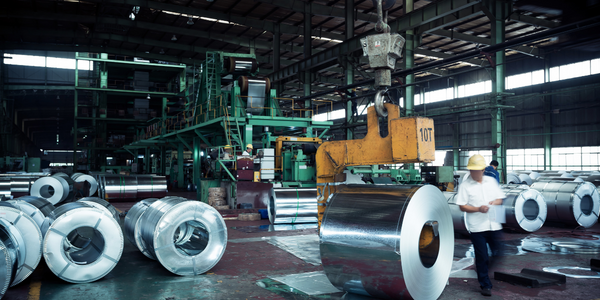Technology Category
- Functional Applications - Manufacturing Execution Systems (MES)
Applicable Industries
- Metals
Applicable Functions
- Product Research & Development
Use Cases
- Additive Manufacturing
- Facial Recognition
Services
- Hardware Design & Engineering Services
About The Customer
Race Face Performance products is a leading designer and manufacturer of performance cycling products. Based in Vancouver, B.C. Canada, Race Face has distribution in over 40 different countries. It specializes in performance cycling components, clothing, and protection. It has been in business for over 20 years. The company is known for its innovative approach to design and manufacturing, always pushing the boundaries of what is possible in the cycling industry. With a strong focus on performance and quality, Race Face is committed to delivering products that meet the highest standards of durability, functionality, and aesthetics.
The Challenge
Race Face, a leading designer and manufacturer of performance cycling products, was faced with the challenge of designing and manufacturing a bicycle crank with increased stiffness and strength targets, without adding any weight to the current aluminum alloy part. The new crank also had to maintain strength targets. The constraints were to manufacture in a cost-effective way that minimized tooling cost and processing of each part. Traditionally, Race Face attempted to maximize stiffness using an I-beam cross-sectional design, optimizing the crank arm at the moment of inertial at various sections. From there, Race Face would run a finite element analysis, make changes and recheck until stresses were minimized for the desired shape and weight.
The Solution
Race Face incorporated solidThinking Inspire into their design process to generate the ideal concept for a forged part. This software allowed Race Face to better understand material placement within its designs and speed up the design process. The built-in manufacturing constraints in Inspire helped Race Face to design for its 2D forging process. The concept generated in Inspire was significantly different than the I-beam architecture that Race Face had traditionally used. Race Face then used this updated design space to generate concepts for both maximum stiffness and minimum mass. The concepts were then imported into a CAD program to build a final design. The final creation is a crank arm that is 25-50% stiffer at the same weight as the previous generation crank arm and much stronger.
Operational Impact
Quantitative Benefit

Case Study missing?
Start adding your own!
Register with your work email and create a new case study profile for your business.
Related Case Studies.

Case Study
Goldcorp: Internet of Things Enables the Mine of the Future
Goldcorp is committed to responsible mining practices and maintaining maximum safety for its workers. At the same time, the firm is constantly exploring ways to improve the efficiency of its operations, extend the life of its assets, and control costs. Goldcorp needed technology that can maximize production efficiency by tracking all mining operations, keep employees safe with remote operations and monitoring of hazardous work areas and control production costs through better asset and site management.

Case Study
KSP Steel Decentralized Control Room
While on-site in Pavlodar, Kazakhstan, the DAQRI team of Business Development and Solutions Architecture personnel worked closely with KSP Steel’s production leadership to understand the steel production process, operational challenges, and worker pain points.

Case Study
Bluescope Steel on Path to Digitally Transform Operations and IT
Increasing competition and fluctuations in the construction market prompted BlueScope Steel to look toward digital transformation of its four businesses, including modern core applications and IT infrastructure. BlueScope needed to modernize its infrastructure and adopt new technologies to improve operations and supply chain efficiency while maintaining and updating an aging application portfolio.

Case Study
RobotStudio Case Study: Benteler Automobiltechnik
Benteler has a small pipe business area for which they produce fuel lines and coolant lines made of aluminum for Porsche and other car manufacturers. One of the problems in production was that when Benteler added new products, production had too much downtime.

Case Study
Continuous Casting Machines in a Steel Factory
With a very broad range of applications, steel is an important material and has been developed into the most extensive alloy in the engineering world. Since delivering high quality is absolutely crucial for steel plants, ensuring maximum productivity and the best quality production are the keys to competitiveness in the steel industry. Additionally, working conditions in steel factories are not suitable for workers to stay in for long periods of time, so manufactures usually adopt various machines to complete the steel production processes. However, the precision of these machines is often overestimated and the lack of flexibility also makes supervisors unable to adjust operating procedures. A renowned steel factory in Asia planned to improve its Distributed Control System (DCS) of furnaces as well as addressing the problem of insufficient accuracy. However, most well-known international equipment suppliers can not provide a satisfactory solution and local maintenance because the project needed new technologies to more accurately control equipment operations. By implementing Advantech’s automated monitoring and control solution, steel factories can not only improve the manufacturing processes but can also allow users to add additional functions to the existing system so as to make sure the operation runs at high efficiency.

Case Study
Automated Predicitive Analytics For Steel/Metals Industry
Asset to be monitored: Wire Compactor that produces Steel RebarCustomer Faced The Following Challenges:Dependent upon machine uptime.Pressure cylinders within the compactor fail to control compression and speed causing problems in binding the coil.Equipment failure occurs in the final stage of production causing the entire line to stop, can you say bottleneck?Critical asset unequipped with sensors to produce data.



